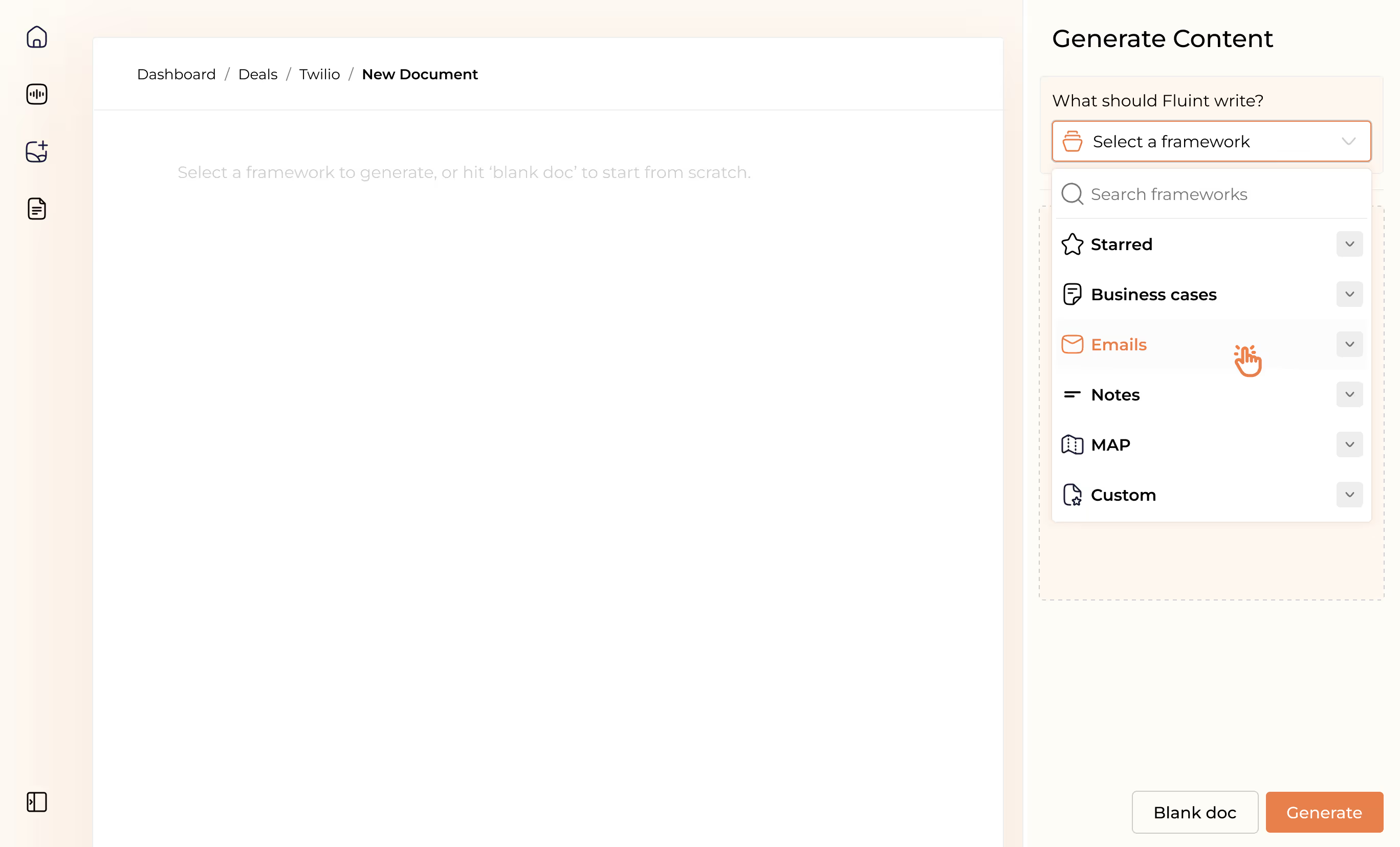The Inner Life of the Enterprise — 10 Concepts for Developing Large Deals


What’s the biggest difference between selling SMB and enterprise deals? Ask someone who’s never sold enterprise and they’ll say deal size. Six, seven-figure contracts.
Ask someone who has sold to the enterprise and you’ll hear something different. The sales cycle.
Whether you’re an AE accepting a promotion, or sales leadership moving your focus up-market, closing larger deals can take far longer than you’d expect.
This can be frustrating, but there’s often a lot happening behind the scenes. Deeply understanding this inner life of the enterprise will let you:
- Keep a high level of empathy for the champion you’re building.
- Troubleshoot what’s actually going on when deals stall.
- Accelerate the sales cycle with valuable follow-ups.
Here’s an insider’s look at 10 corporate concepts you should know as you develop larger deals.
1. The Law of Large Numbers
A classic error when selling enterprise is focusing on your impact to revenue. If you you can create $10M in new revenue, that sounds good, right? Can anyone turn down $10M?
They can — and do all the time. $10M doesn’t qualify as a rounding error for someone like Procter & Gamble, who did $75B dollars in sales last year ($10M is 0.0001% of that).
On the flipside, project management software may sound pretty basic. It’s helpful, but not groundbreaking. But if you’re an energy company investing $20B in capital projects each year, project management reducing waste by 1% creates $200M in value.
The Takeaway: The Law of Large Numbers makes it difficult to have a meaningful impact on revenue, so don’t over-index on this in your messaging.
2. Meetings as Forcing Mechanisms
Meetings are a corporate ritual that takes some getting used to. Large companies have a lot of meetings. A LOT of meetings. There’s a purpose to this — it’s not always the meeting itself that’s valuable. It’s that the meeting becomes a forcing mechanism.
Meetings are a version of corporate deadlines. They’re a way of forcing feedback, decisions, or executing on certain tasks.
The Takeaway: Remember that after an intro meeting, your counterpart will likely book an internal meeting to discuss next steps. It’s a way of forcing feedback. Don’t expect a second meeting with you until this ritual is complete — which relies on points #3 and #4 below.
3. The Game of Calendar Tetris
Even if your first contact happens to be the decision maker (which is unlikely), it’ll cost them relational capital to unilaterally make your deal happen. Which means they’ll always bring other colleagues into the picture — lots of them. Each with their own schedule and priorities.
Enter the game of Calendar Tetris. This is where your contact tries to line up a 30-minute call between 5 different people, with packed schedules, across different time zones.
The Takeaway: If you’re booking a follow-up and are given a date three weeks in the future, don’t worry. This doesn’t mean they’re not interested. The most likely explanation is they simply couldn’t find a time that was available sooner.
4. The Art of Internal “Languaging”
Every enterprise speaks a different dialect of corporate. It’s shaped by executives talking about their goals and needs to business unit leaders, and how those leaders relay this to their VP’s, and so on.
Using the right language inside a request makes getting buy-in easier. It taps into a narrative that leadership one level up is already bought into. So, employees learn to frame requests around key phrases and trigger words that grab attention.
This practice, “languaging,” is typically done in the form of a memo, deck, or emails that gives their boss something to reference when talking to “higher-ups” in a closed-door meeting.
The Takeaway: Pay attention to the exact words your buyers use. Mirror this in your sales follow-up’s. The point is to make it unbelievably easy to share about your solution more widely, without forcing your champion to re-write and translate your lingo into theirs.
5. Non-Committal Feedback
You won’t always know where you are in the sales cycle. Your prospects aren’t ready to move forward, but they also haven’t said no. Which means you simply don’t know where you stand.
Here’s the thing. It’s very likely that your champion doesn’t know, either. In some ways, corporate environments are the same as yours — we all respond to immediate threats first, and push all else down our to-do list. For example, if your team’s hiring a new VP of Sales this week, software probably isn’t the first line on the sales team meeting agenda.
The Takeaway: Make sure you’ve built a sharp problem statement that can’t be ignored. Combine this with your champion’s ability to “language” your message, and when built into an internal meeting agenda (see #2), you’ll begin to see movement on your deal again.
6. Titles Matter, A Lot
Titles are a powerful tool. It’s how corporate power is signaled. A Vice President has more power than a Manager. That’s obvious. But the non-obvious reason why titles matter is you should be cognizant of WHO pitches your idea. Ideas are not independent of their messenger.
In large corporates, the perception of a new product varies based on who champions it. An idea suggested by an analyst can be dismissed as “outlandish,” but introduced by an SVP as “visionary”.
The Takeaway: While a bottom-up sales approach has its place, one short email sent by a high-ranking employee in support of (or against) your deal can be the deciding factor. Cultivate support from decision-makers up and down the food chain.
7. Mismatched Levels of Urgency
Straight up, large companies will never have the same sense of urgency you have. Corporate environments are highly-structured and operate in annual planning cycles. Not the monthly, or even weekly, sprints of smaller companies.
What’s more, your counterpart’s personal financial situation is rarely linked to your particular deal. So the importance of a sales meeting is diluted to the enterprise. By contrast, you may only be working a handful of large deals at any given time, so each one becomes immensely more valuable to you.
The Takeaway: Frame concerns about slow-downs in your deal around the personal benefit to your counterpart. For example:
“You mentioned better data is part of your VP’s top goals, and she’d love to see proof-of-concept results in Q4, which is right before annual reviews start.
If we can have IT share your data this week, you’d be able to showcase how you’re proactively moving your VP’s top goals forward in time for Q1 reviews.”
8. The Stigma of Failure
Long-standing employees can be incredible allies. They can navigate your deal through backchannels and closed-door conversations. They often have a higher level of informal decision-making clout, too.
While a high-growth team may view failure as testing and scaling, corporate employees recall one thing about deals that didn’t work — it failed. Failure is not well-tolerated in the enterprise, so long-time employees internalize the art of avoiding failure.
The Takeaway: Early in your discovery, dig deep into what’s been tried in the past. If your company is even remotely similar to a previously-failed concept, spend extra time reassuring your counterpart how you’re different. It may be worth your time to create an “us vs. them” chart.
9. Approval Bottlenecks Are Real
There’s always a final decision-maker who needs to sign off on your deal. That person is the one willing to pull the spend for your product from their budget. Depending on what you’re selling, this person may be a senior executive. Unfortunately, senior executives don’t have much free time.
This leads to bottlenecks where everyone, including your champion, is waiting on feedback from a single person. Not only for your deal, but tons of projects. Which makes it easy for your deal to slip down the agenda, especially when this decision maker lacks context from earlier meetings.
Takeaway: Improve your odds of success by creating internal communications your champion can forward after each meeting, throughout the sales cycle. Encourage them to plant the seed early with, “FYI,” and “Just keeping you posted,” messages throughout the sales cycle.
10. The Top-Down Scramble
Enterprise employees can spend considerable time fielding opportunities from internal leaders. Some are helpful, many are distracting. For example, a board member may read an article in the Wall Street Journal, forward it to their executives, and an executive will forward it to their team to say, “What are we doing about this?”
Answering that email can derail an entire day and delay any progress on other projects. If you’re not directly tied to this newly-urgent priority, there’s a good chance you’ll be out of mind for a few days.
Takeaway: Make sure you’re on top of the latest news, comments, and statements coming from corporate leadership. Set up Google alerts, read 10-K’s, and sign up for press releases from the companies you’re cultivating a deal with to know what’s top-of-mind.
If you’re working to close larger and more complex deals, you’ll need to start building and selling with a committed champion for every deal in your pipeline. See how Fluint helps you get your champion’s entire team on board with buying your product, faster.
FAQ's on:
Why stop now?
You’re on a roll. Keep reading related write-up’s:
Draft with one click, go from DIY, to done-with-you AI
Get an executive-ready business case in seconds, built with your buyer's words and our AI.

Meet the sellers simplifying complex deals
Loved by top performers from 500+ companies with over $250M in closed-won revenue, across 19,900 deals managed with Fluint

Now getting more call transcripts into the tool so I can do more of that 1-click goodness.



The buying team literally skipped entire steps in the decision process after seeing our champion lay out the value for them.


Which is what Fluint lets me do: enable my champions, by making it easy for them to sell what matters to them and impacts their role.








